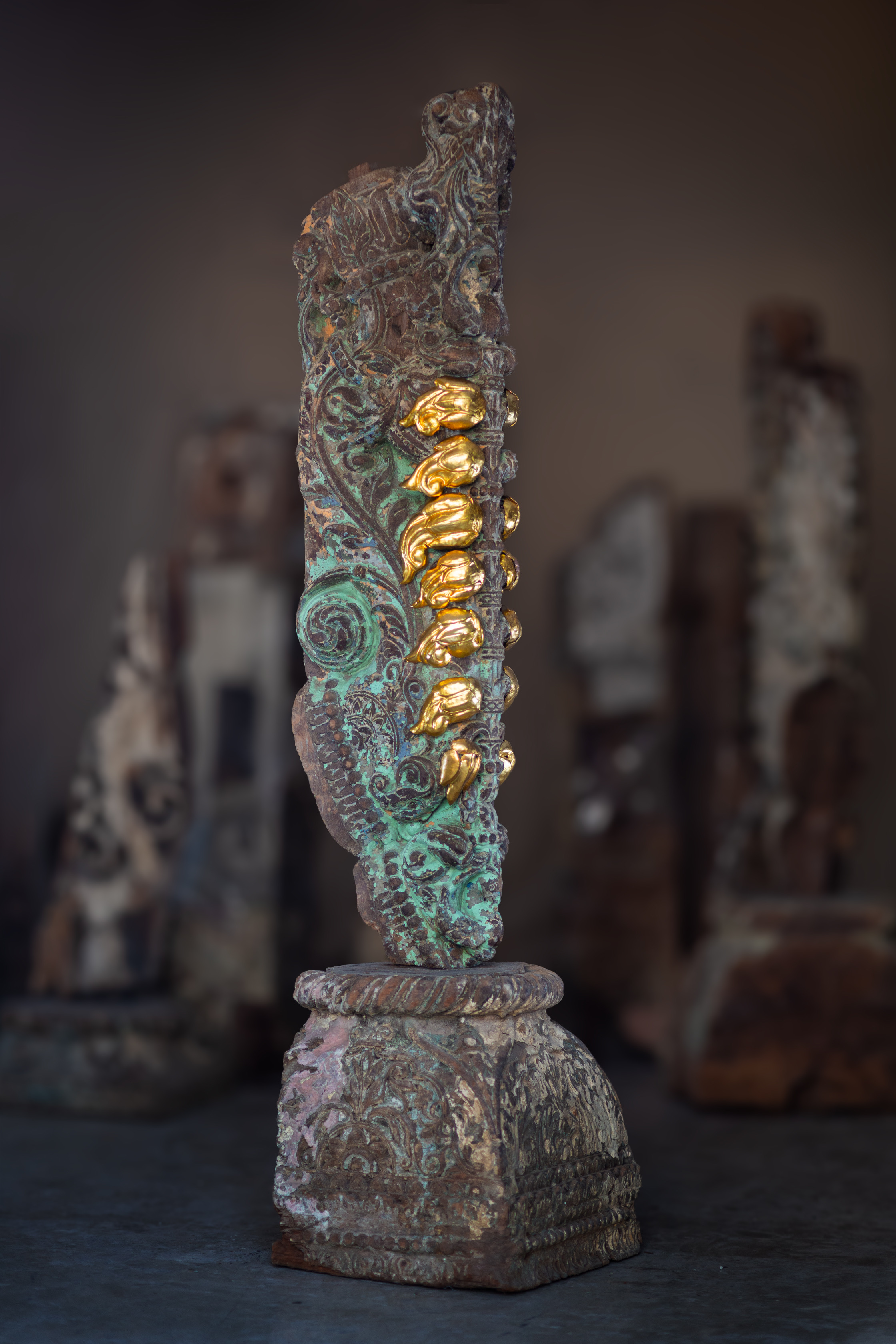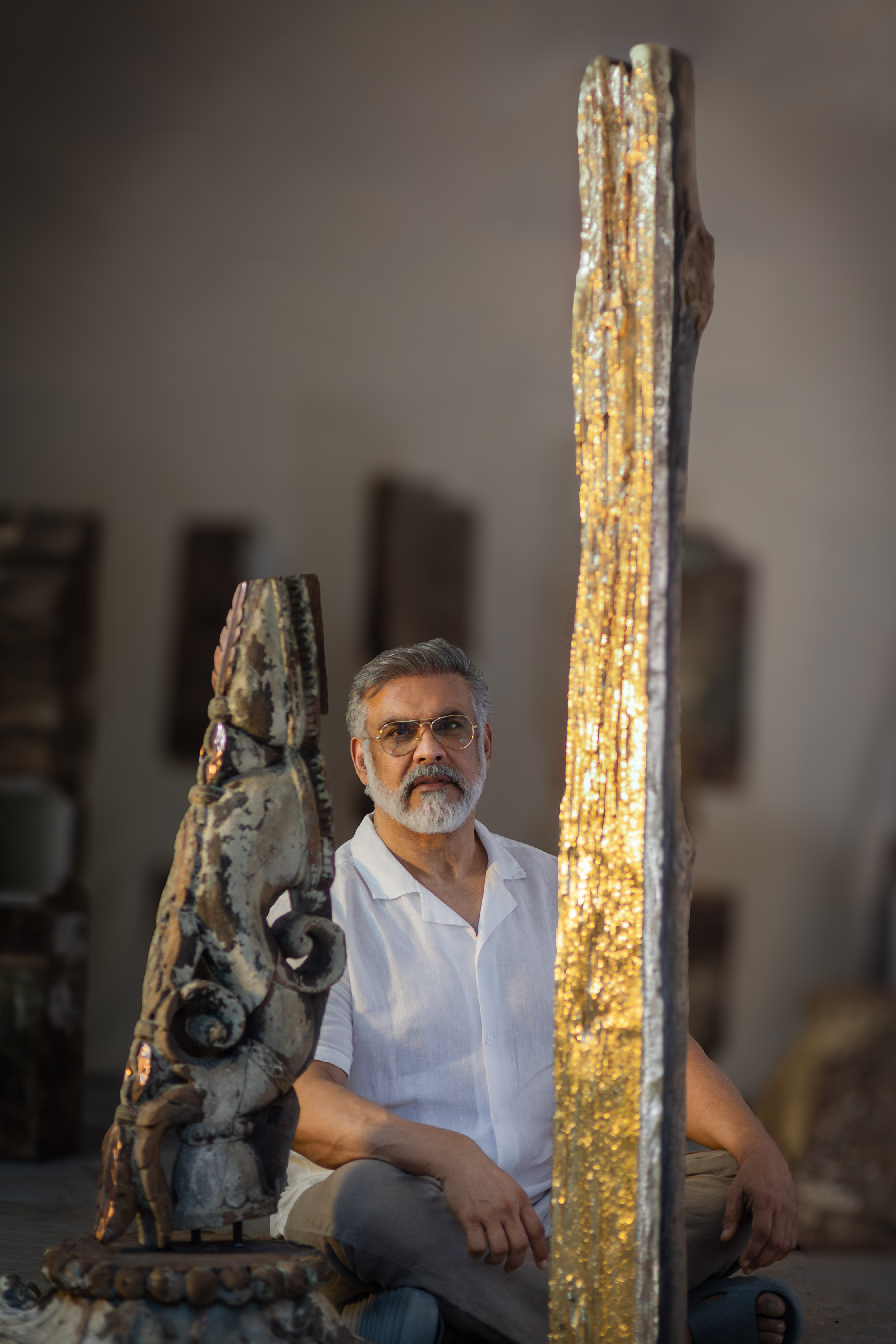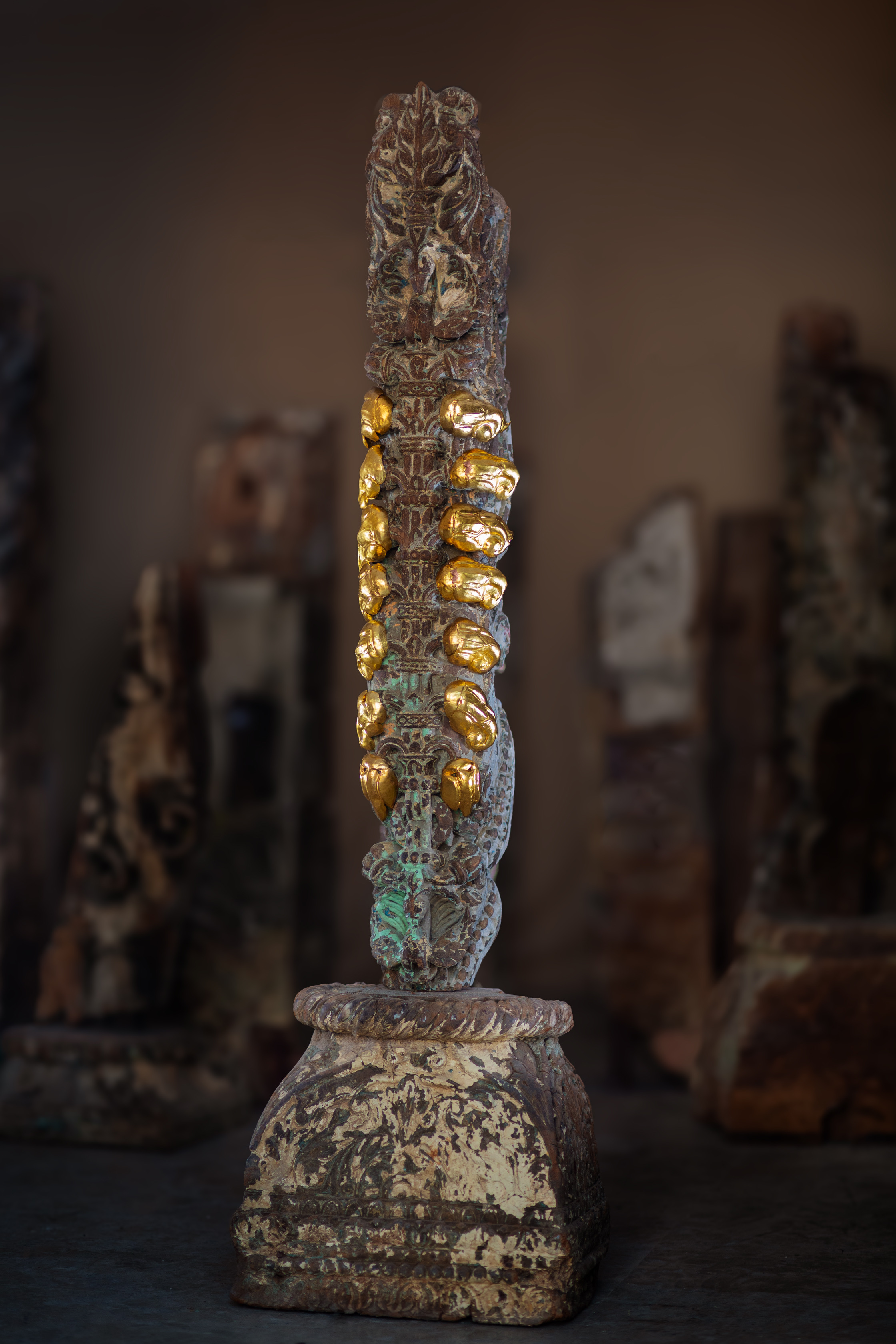8 February 2024/
MUKHOWTA – RAJ SHAHANI’S EXHIBITION AT BIKANER HOUSE, NEW DELHI
Renowned contemporary artist Raj Shahani presents MUKHOWTA, a series of wood works where he makes a forest of antique wooden corbels on bases in a circular formation like a sacred forest. Drawing inspiration from the sacred Snake Groves of Northern Malabar, Kerala, renowned artist Raj Shahani creates a constellation of wood and metal in the Mughal Fountain Rotundas of Bikaner house, New Delhi. The exhibition will be on display till 29 February 2024.
“Raj Shahani places pieces of Burma teak behind shining plates of metal – copper, gold, silver, panchadhatu, bronze, German silver, brass and steel, reminding us of the ethereal presence of materials used in sculpture, but it also hides something valuable behind by a veneer of a shining metal. That shining metal is our alter ego, our ‘Mukhowta’, the mask that we don hiding our real beautiful selves in wood. The two fountains in the courtyard don snake sculptures made from a jute rope adorned with an iron hood and tail,” says the curator of the show.
In the districts of the Malabar in Northern Kerala, Theyyam, the ritual folk art is performed in sacred cove, called the Kavu and the ‘Sarpa Devtas’ are worshipped as protectors.
“The Theyyam dancers dance through the wake of night enthralling an audience into ecstasy,” says the artist who get inspired by the unique rituals.
“Masks have had an undeniable existence in the history of visual culture of India. Masks act as a spiritual apparatus to performances that are esoteric and magical, used by shamans as acts of divine presence and the clairvoyance. ‘Pitala’ (Brass) and ‘Tambra’ (Copper) are two sculptures of the logs that in their veins hold memory of the forests. ‘Swarna’ (Gold) and ‘Rajata’ (Silver) are the two anapakshis where the peacocks are embellished with a Gold and Silver plating. ‘Kansa’ ( Bronze) ‘Tina’ (German Silver) , ‘Loha’ ( Steel) and ‘Panchadhatu’ (Five Metals) are four sculptures where Raj makes the brackets vertical in an upright standing position by giving them legs using bronze, tin, steel and aluminium. Using the same metals he fills in the cavities left in by the pillars and wooden fixtures that have been taken apart. By filling them in he makes a cosmetic effort at making them complete again using a shining surface. An aesthetic measure is at play – we aren’t ever made to feel complete with our adornments.
A smaller third corbel has a vine of floral elements emerging from the jaws of the dolphin. He caps this makara with a ‘panchoha’ or ‘panchdhatu’ alloy. The gangetic dolphin is a very sacred animal that is the vehicle or vahana of the Ganges, India’s sacred river.
Panchaloha or Panchadhatu is an alloy of gold, silver, copper , zinc and iron and is used across Hinduism , Buddhism and Jainism to make sacred idols and utensils for worship.





